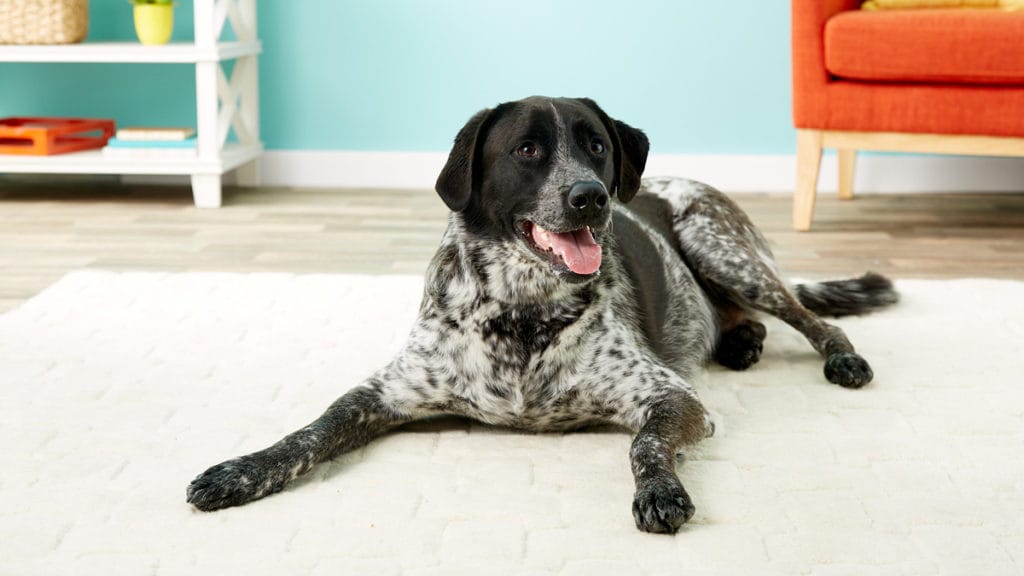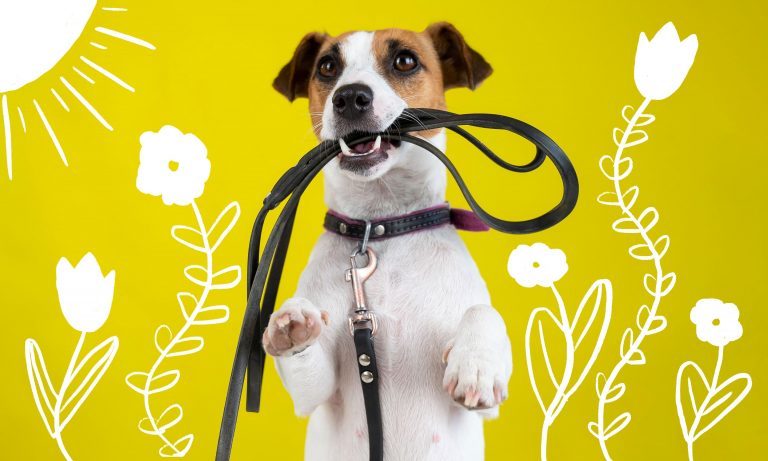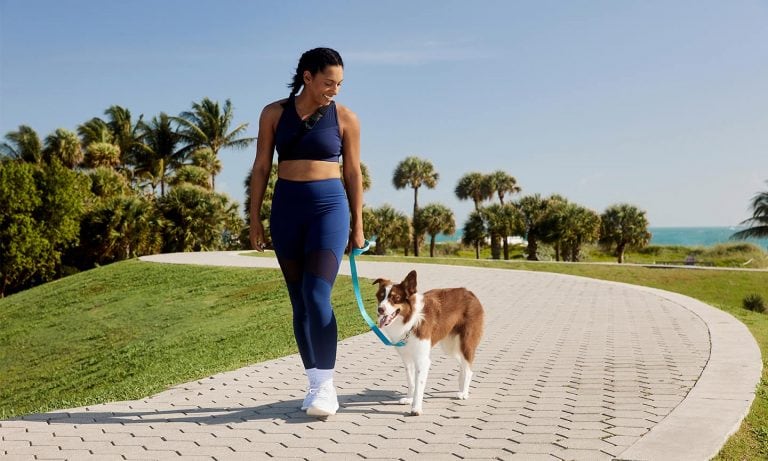Injuries can prevent dogs from maintaining the active and healthy lifestyles they’re used to, but it doesn’t have to be that way. With the right canine physical therapy, your disabled or injured dog can get back to her happy active self again. Below you’ll find some dog physical therapy exercises you can do with your four-legged friend to form a path toward recovery.
Before You Begin Animal Physiotherapy
Work with a Pro
To make sure your disabled dog rehabilitates safely and appropriately, work with a veterinarian or a licensed physical therapist who has taken canine rehabilitation training.
“Some may have actual canine certification, but it is not required,” says Susan E. Davis, PT and owner of Joycare Onsite and author of “Physical Therapy & Rehabilitation for Animals: A Guide for the Consumer.”
Pinpoint Problem Areas and Goals
“The dog’s problem areas should be identified and goals set prior to the start of rehabilitation,” Davis says.
Your veterinarian or pet physical therapist will help you determine problem areas as well as appropriate and realistic rehabilitation goals. Davis suggests asking these questions:
- Does the dog need to increase mobility and decrease joint or muscle stiffness, or is the problem more of a strength and muscle weakness issue?
- What activities of daily living are impacted by the illness or injury?
- What is realistic in terms of regaining the lost skill?
“Once the goals are set, it is easier to pinpoint what treatments are best to use,” Davis says, adding that your physical therapist will assign you homework based on your disabled dog’s needs. “After treatments commence, follow all instructions given to you by your vet or therapist to do at home between rehab visits.”
Dog Physical Therapy Exercises to Help Your Pet Stay Fit
Functional animal physiotherapy exercises work best, Davis says. Functional exercises involve the whole body, using dynamic movements that mimic actions that are part of a dog’s normal daily routine.
Davis uses a variety of animal physiotherapy exercises to rehabilitate disabled dogs and injured dogs. Here are a few you can try at home.
Sit to Stand
Start by backing your dog’s hind end into a corner. Use a treat or voice command to ask her to stand, and then slowly return to sitting. Repeat 10 times, twice per day.
Step-ups
Use a raised platform such as a pallet or hard, non-slippery box or book. Have your dog place one front paw up onto the platform, followed by the other, and then have her move both paws back to the ground. During this exercise, her rear legs stay on the ground. After a few repetitions, have your dog completely climb up on the platform with all four legs, and then back down. Repeat several times.
Dancing
Hold your dog’s front paws or the upper arms just above her elbows, raising her up into a standing dance position. Sway from side to side, and then progress by step dancing forward, backward and sideways.
Core Exercises
Using wobble boards or placing your dog atop a small physio ball, encourage your dog to balance. Use your fingers to gently tickle her belly muscles to help your dog engage those muscles.
Controlled Leash Walking
Use a chest harness and a lead. Keep the pace controlled, such that your dog is forced to use all of her limbs—not just bunny hopping. Davis suggests inserting mini intervals of jogging or a faster pace to improve cardiovascular fitness.
“Just running and playing in the yard or park is not enough,” she says. “Dogs like variety and need structured linear movement that a leash walk provides. Controlled leash walking also provides the one-on-one time with you they crave.”
Full-Body Exercises
“Swimming, water exercises and agility courses using hurdles, weave poles or Cavaletti rails can offer fun and full-body ways for your pet to exercise,” Davis says.
The Outward Hound Zip & Zoom Indoor Agility Kit offers everything needed to set up a dog agility course.
Prevent Further Injuries
On the path to recovery, Davis recommends watching for adverse reactions and overcompensation. Contact your veterinarian if you see signs of pain or fatigue, swelling or tenderness in your injured dog.
“Know that every pet heals at different rates, but ask your care provider to give you a ball-park idea of a typical time frame for your pet’s age and condition,” Davis says.
Beware of allowing your disabled dog’s healthy parts to become overused or further injured during rehab.
“Help the pet shift weight gently onto the body area being rehabilitated to re-distribute weight appropriately,” Davis says.
Rehabilitation is vital to the recovery of your disabled dog or injured dog. With the right animal physical therapy exercises, your dog can return to the active lifestyle she needs to maintain optimal health.

Michelle McKinley is dedicated to creating informative pieces that help pet parents train, care for and love their cuddly companions. She operates a digital ad agency providing content to enterprise and small businesses. As a writer for Chewy, Michelle delights in sharing tips and techniques that strengthen the relationship between owner and pet. She works with experienced veterinarians, knowledgeable pet behaviorists and pet brands to bring the best in pet to readers.
Share:












